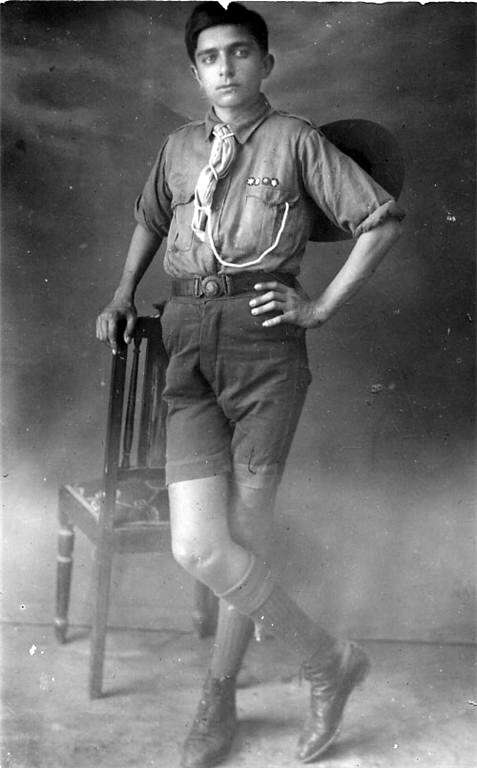
Figure 1.--This Greek Boy Scout was photographed in the 1930s before the Greek Nationalist Government EON banned Scouting in 1939. |

|
The Greek boy scout movement was founded in 1910. For the first two decades most of the Greek boy scouts were somewhat older youths than was common in Britain where theScouts were founded. Mist early Scouts were young men in their early 20s or in some cases teenagers. The Greek word for boy scout is "Proskopos" and this word does not have anything to do with the word boy ("agori" in modern Greek). The Boy Scouts became very popular during the 1930s in Greece. Younger boys began joining. A Cub section for the youngest boys was formed and named the Apprentice Scouts. Thousands of boys joined. The Ethniki Organosi Neolaias (EON--National Organization of Youth), Fascist youth group in 1936 began recruiting Boy Scouts for their movement. The Government in 1939 finaly disbanded the Scouts. Greece after fendng off an Italian attack was invaded by the Germans in 1941 and swiftly occupied despite assistance from the British. The Germans and Italians were also opposed to Scouting. The Greek Boy Scout movement was founded again after World War II and started to
operate again. Boy scouts became very popular during the 1950s and 60s in Greece. The 1963
world jamboree was held in Marathon, Greece--site of the ancient battle between Persians and Greeks. In the larger cities middle class families could afford better clothing for
the children, thousants of boys aged 8 to 17 joined the movement. The Boy Scout movement somewhat declined in the 1970s but the interest has remewed since 1984. For the past three decades, Boy Scout troops have operate in every small or big city in Greece.
The Greek boy scout movement was founded in 1910. For the first two decades most of the Greek boy scouts were somewhat older youths than was common in Britain where theScouts were founded. Mist early Scouts were young men in their early 20s or in some cases teenagers. The Greek word for boy scout is "Proskopos" and this word does not have anything to do with the word boy ("agori" in modern Greek). Their uniform was similar to the uniform of the British scouts, with knee length shorts, shirt, knee socks, neckerchief and a hat.
The Boy Scouts became very popular during the 1930s in Greece. Younger boys began joining. A Cub section for the youngest boys was formed and named the Apprentice Scouts. Thousands of boys joined. The Ethniki Organosi Neolaias (EON--National Organization of Youth), Fascist youth group in 1936 began recruiting Boy Scouts for their movement. The Government in 1939 finaly disbanded the Scouts. Members had to hand over their flags and uniforms to the members of EON. In many cases public ceremonies which were organized for this reason. Individual accounts say that a lot of Boy Scouts were treated badly by EON members at these ceremonies. We have little information about Greek Boy Scouts in the 1930s
Greece, but it is most likely that the uniform didn't change.
Greece after fendng off an Italian attack was invaded by the Germans in 1941 and swiftly occupied despite assistance from the British. The Germans and Italians were also opposed to Scouting. They did not ban the Scouting movement as EON had already done that 2 years erlieer. The Germans withdrew from Greece and the country was liberated by Resistance groups and the British (1944). The Greek Boy Scout movement was quickly organized after World War II and started to operate again. This occurred during a brewing Civil War which broke out after the War. The Boy Scouts were involved to a degree because the Communists saw the Boy Scouts who were generally favorable to Christianity and the monarchy as a conservative youth movement. Scouting was generally an urban, middle-claqss movement. The new uniform consisted of short shorts, shirt, knee socks, and a neckerchief.
Boy scouts became very popular during the 1950s and 60s in Greece. The 1963
world jamboree was held in Marathon, Greece--site of the ancient battle between Persians and Greeks. In the larger cities middle class families could afford better clothing for
the children, thousants of boys aged 8 to 17 joined the movement.
The Boy Scout movement somewhat declined in the 1970s but the interest has remewed since 1984. For the past three decades, Boy Scout troops have operate in every small or big city in Greece.
Navigate the Historic Boys' Uniform Chronology Pages:
[Return to the Main chronologies page]
[The 1900s]
[The 1910s]
[The 1920s]
[The 1930s]
[The 1940s]
[The 1950s]
[The 1960s]
[The 1970s]
[The 1980s]
[The 1990s]
[The 2000s]
Navigate the Historic Boys' Uniform Web Site:
[Activities]
[Biographies]
[Chronologies]
[Countries]
[Essays]
[Garments]
[Organizations]
[Religion]
[Other]
[Introduction]
[Bibliographies]
[Contributions]
[FAQs]
[Questions]
[Unknown images]
[Boys' Uniform Home]
Navigate the Historic Boys' Uniform Web organization pages:
[Return to the Main Greek Scout page]
[Return to the Main Greek page]
[Boys' Brigade]
[Camp Fire]
[Hitler Youth]
[National]
[Pioneers]
[Religious]
[Royal Rangers]
[Scout]
